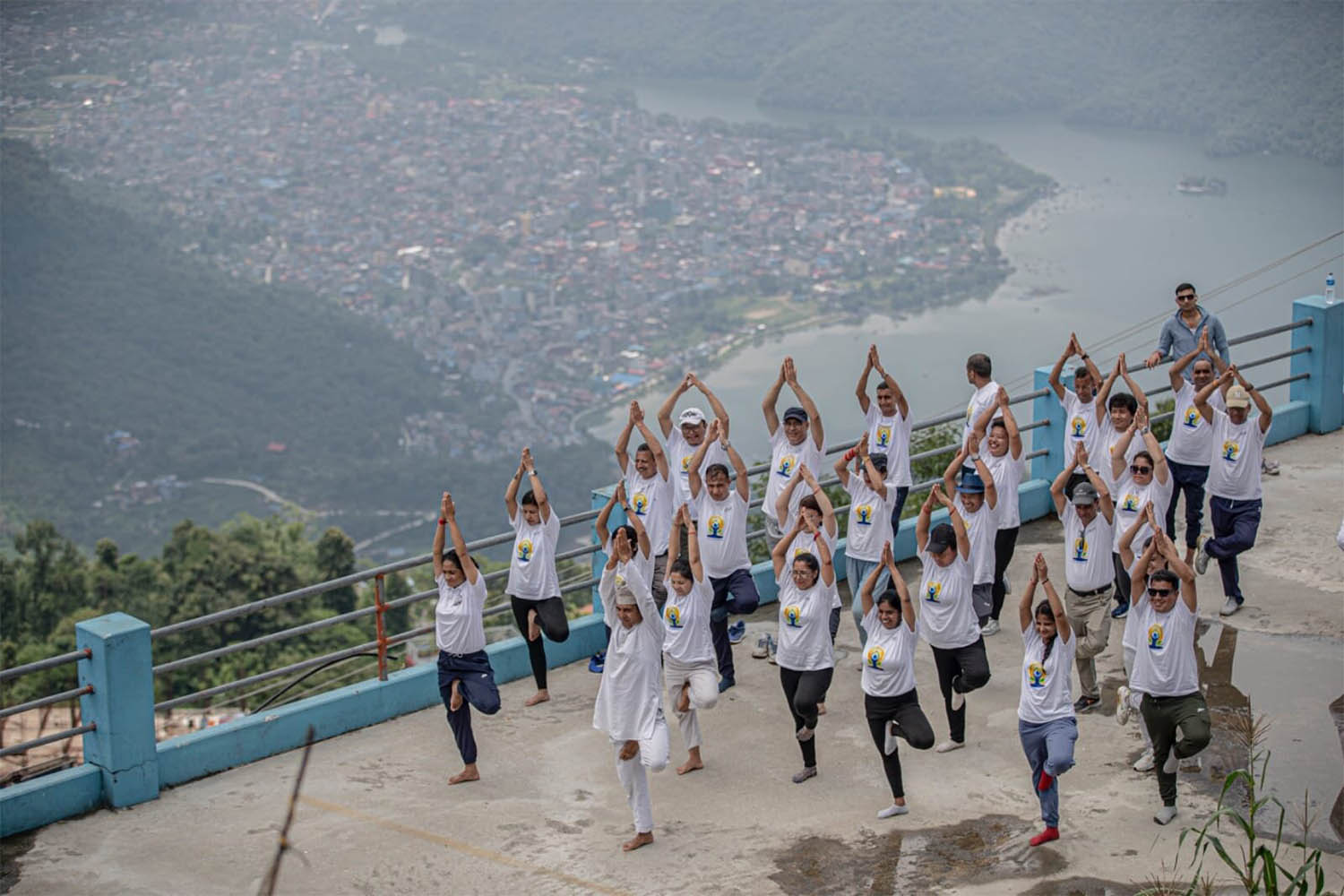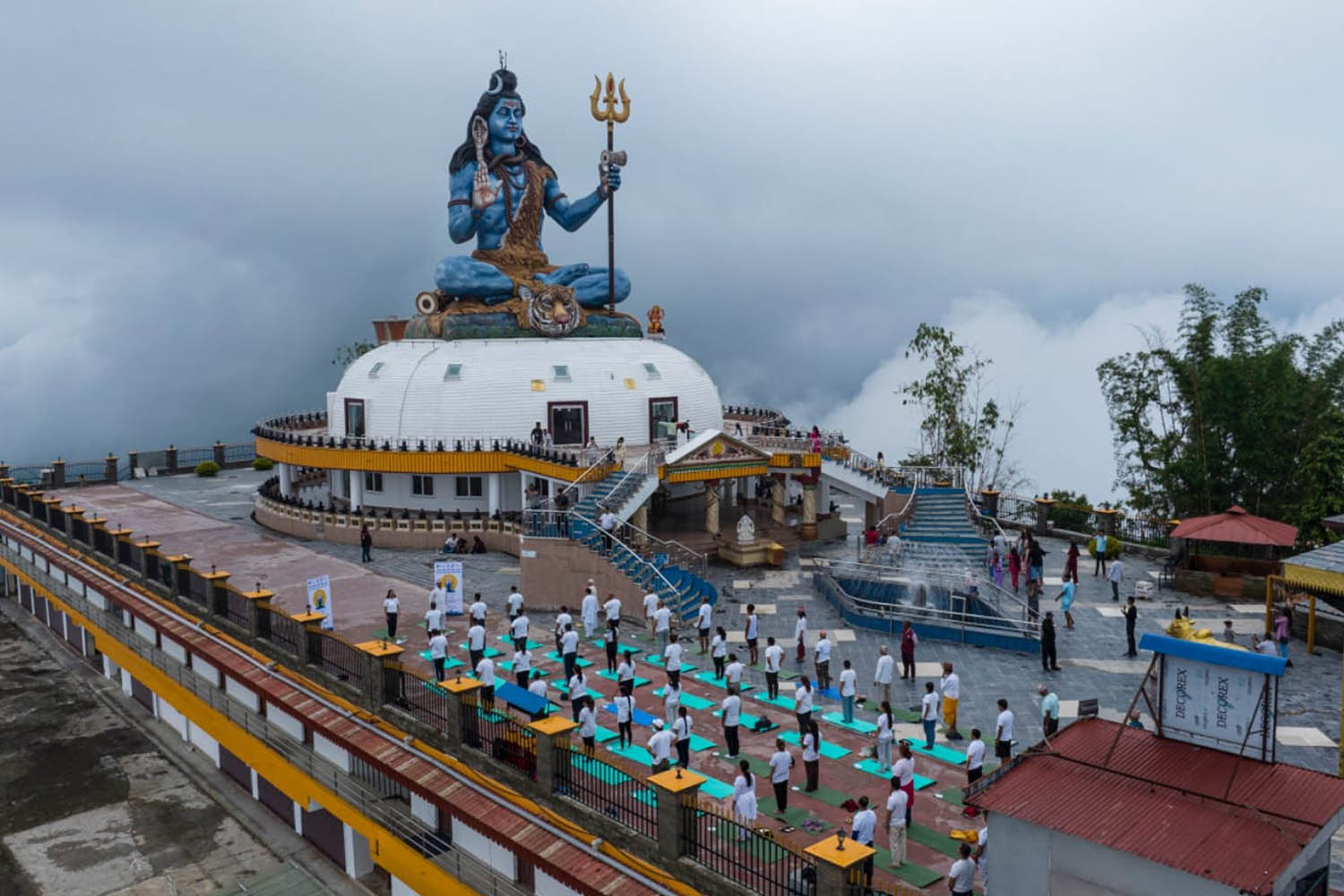Money
Yoga in Nepal’s mountains
Plenty of places for yoga retreats are dotted across the country, but Kathmandu’s hillsides and Pokhara have recently been favourite venues.
Aarati Ray
In 2013, Lata Tulachan’s life reached a breaking point. Struggling with the imminent collapse of her marriage and overwhelmed by a personal crisis, the US-based yoga instructor sought refuge in Pokhara.
“I was broken and battered,” she says.
In Pokhara, she began yoga. “Yes, I felt a spiritual transformation happening within me.”
Yoga is a mind-body practice that can build strength and flexibility. Physical postures, breathing techniques, and meditation may help manage pain and reduce stress.
This came true for Tulachan.
Her story is unique. Yoga, culture, nature, and spirituality make it a fantastic adventure, and Tulachan realised that herself. The sound of fresh air and bright sunshine provide a sense of peace and tranquillity hard to find in a gym. The natural environment also helps reduce stress and anxiety, thereby promoting both physical and mental health.
Nepal is known for its beautiful mountains, rich culture, food, heritage, and architecture. But one of its lesser-known attractions is yoga. Plenty of places for yoga retreats are dotted across the country, but Kathmandu’s hillsides and Pokhara have recently been favourite venues.
In September 2014, Indian Prime Minister Narendra Modi called for an International Yoga Day, which he enunciated during his speech at the 69th session of the UN General Assembly. Modi sought a nod for an International Yoga Day proposed for June 21 each year.
It was endorsed by a record 175 member states, including Nepal. Since then, Nepal has regularly organised Yoga Day.
On June 19 this year, the Embassy of India in Kathmandu organised a Yoga and meditation practice for more than 450 participants on the banks of Lake Phewa in Pokhara. It also organised a large-scale Yoga demonstration for more than 900 participants in Lumbini.
“Nepal could be a venue for those seeking spiritual and physical well-being. Your yoga journey isn’t complete without experiencing it in Nepal,” says Tulachan.
She has been promoting Nepal as a premier destination for yoga tourism, organising retreats and inviting participants from the United States to discover Nepal’s spiritual richness.
Tulachan’s experience resonates with the belief shared by many yoga practitioners and entrepreneurs.
It remains untapped, says Manohar Shrestha, the founder of Purna Yoga and Treks in Pokhara. He has been promoting yoga trekking in Nepal since 2002.
Yoga in Nepal is not limited to physical postures (asanas), says Shrestha. It also encompasses meditation, mindfulness, and a deep connection with nature, he adds. “Yoga is much more than asanas. It’s a way of life.”
Tourism entrepreneurs see Pokhara, the gateway to the world-famous Annapurna trekking route, as a potential yoga destination.
Wellness tourism has flourished globally. The Global Wellness Institute has projected the market to reach $919 billion by 2025. Yoga has gained widespread popularity as a key pillar of wellness tourism, with millions seeking experiences that integrate physical, mental, and spiritual well-being.
Tourism entrepreneurs say Nepal’s spiritual and cultural legacy is ideally suited to meet this demand. The country is home to sacred sites like Lumbini, the birthplace of the Buddha, and the Himalayas, long associated with spiritual attainment.
It offers a whole package of natural beauty and yogic traditions.
Shrestha has a story that prompted him to begin a trekking business that combines yoga based in Pokhara.
“As a child, I suffered chronic health issues that no medical treatment could alleviate. Despite my father being a doctor, I was always sick, always in pain. I could barely make it through school,” he recalls.
After years of struggle, Shrestha discovered yoga, which transformed his health and well-being.
“Yoga gave me a cure, which no medicine could do.”
This personal journey inspired him to merge yoga with trekking in Nepal’s Himalayas, offering tourists a physical challenge and mental rejuvenation.

Shrestha’s passion for promoting Nepal as a yoga destination is rooted in his belief that the country’s natural surroundings are crucial to the yogic experience. “For depression and mental health issues, yoga alone isn’t enough. You need a connection with nature,” he says.
“Nepal, with its rich natural beauty, is a perfect place for yoga.”
Before the Covid-19 pandemic, Shrestha received 10 to 15 foreign visitors daily, even during the peak tourism season. Post-pandemic, those numbers have dropped to just 8. But he believes that will grow soon.
Despite all its plus points, Nepal faces several obstacles to positioning itself as a yoga destination.
The first and foremost is the cost of travelling to Nepal.
“The airfare is very high, which remains a major barrier to establishing Nepal as a yoga hub,” says Shrestha.
He has planned the Nepal Yoga Festival in October. Shrestha and his team expect 300 participants, some 170 of them foreigners.
However, most of them have cancelled bookings. “We now have the final confirmation by only around 30 international participants,” says Shrestha. “The main reason is the steep price of flights. Expensive flight tickets are the biggest hurdle to tourism.”
Autumn (September-November) is the peak tourism season in Nepal: it’s a perfect time for trekking as the skies are clear and the weather is calm.
Besides, tourism entrepreneurs say, Nepal lacks the infrastructure to support large-scale yoga tourism.
“We have an infrastructure bottleneck,” says Pokhara Yoga School and Retreat Center director Binod Sharma. “Pokhara and Lumbini make a perfect yoga hub.”
The potential doesn’t interest the government, however, he says. “We don't even have enough manpower for this industry.”
For Shrestha and other entrepreneurs, if properly promoted, yoga could become a multi-million-dollar industry in addition to Nepal’s traditional trekking and mountaineering products.
“A proper infrastructure and investment could put Nepal at the centre. Nepal has the potential to draw 10 million tourists,” adds Shrestha.
Paola Cruz, a New York-based yoga instructor, visited Nepal in 2016 for a three-month trip across Asia. Her time in Nepal, particularly the 10-day Langtang Trek, remains one of the most transformative experiences of her life.
“Energetically, Nepal is one of the most pristine places I’ve visited,” she said. “The Himalayas, the spiritual sites, the kindness of the people—it’s all incredibly powerful.”
Cruz, who will present at the Nepal Yoga Festival in October, says, “Nepal’s unmatched spiritual energy positions it as the premier destination for spiritual and wellness tourism.”
Basu Gautam, president of the Lumbini World Peace Forum, says in an article published in the Post in 2021 that spiritual tourism in Nepal could experience substantial growth as the world emerges from the pandemic.
“Much like the hippie trail of the 1960s and 1970s, which attracted mysticism seekers to Nepal, a new wave of travellers focused on mindfulness and wellness could be drawn to the country in the post-pandemic era”.




 6.12°C Kathmandu
6.12°C Kathmandu





